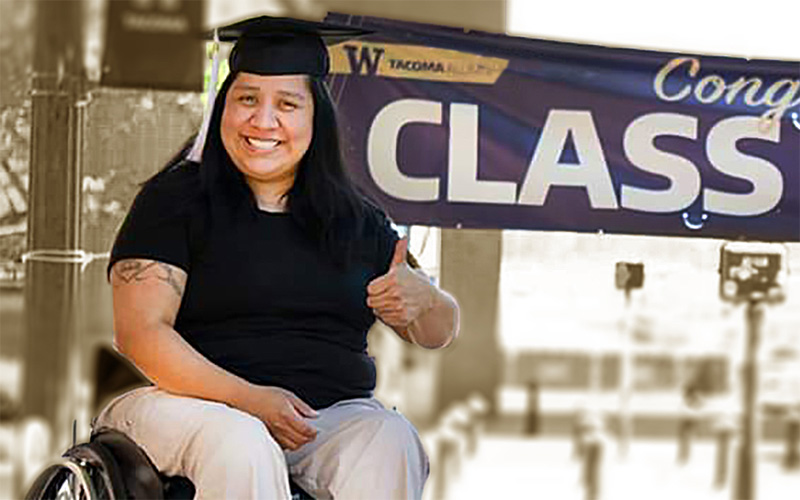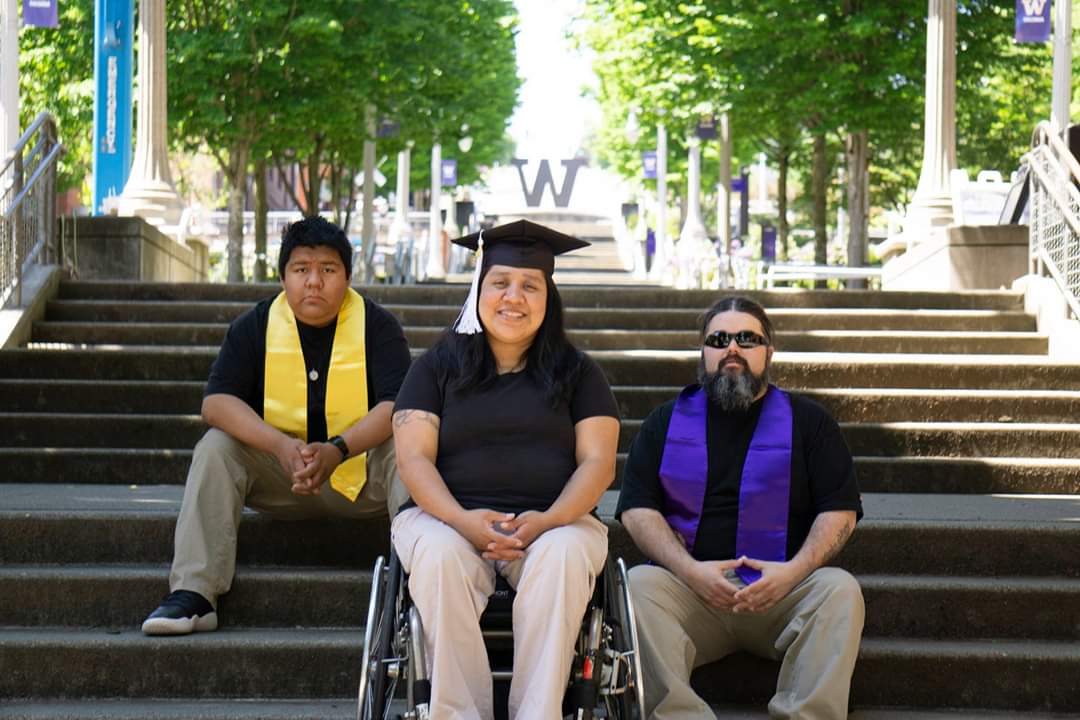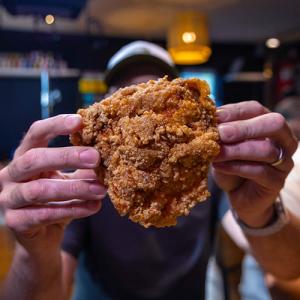
Erica Myron: Taking Shape
UW Tacoma alumna Erica Myron, '20, is on her way toward become a professor of American Indian Literature.
Erica Myron is a sculptor. She learned the art form during a class she took in December at Crescent Moon Gifts in Tacoma. In the past few months Myron has made a few dragons, a Mandalorian (“Star Wars”) and is currently putting the finishing touches on a miniature Darth Vader statue. “My husband loves Star Wars,” said Myron. “I made the Mando and the Darth Vader for him.”
Granted, Myron didn’t have a lot of free time to practice her new skill. She graduated from UW Tacoma in June and spent the months leading up to Commencement studying and working on assignments while also parenting her teenage son.
“The thing I liked most about UWT was that if I took a science class and a literature class and a philosophy class they somehow all tied together and the lessons would line up,”
——Erica Myron, ’20
Myron transferred to UW Tacoma in the fall of 2018 from Pierce College. “I started with the goal of becoming a nurse,” she said. “I went to CNA [Certified Nursing Assistant] school then transferred to Pierce where I took a Spanish class and then I wanted to be a Spanish Translator and then I took a statistics course and wanted to be an actuary and then I came to UW Tacoma and wanted to be teacher or maybe a chemist.”
Myron ultimately decided to pursue a degree in Interdisciplinary Arts & Sciences. The program allowed her to explore different interests. “The thing I liked most about UWT was that if I took a science class and a literature class and a philosophy class they somehow all tied together and the lessons would line up,” she said.
The pandemic upended Myron’s post-graduation plans. “My husband couldn’t work so we ended up using our savings,” she said. “For the next year I’m going to work so we can get back to where we were before this all happened.”
Graduate school is in Myron’s future. “I want to be a professor of American Indian literature,” she said. Myron is a member of the Fort McDowell Yavapai Nation. The Yavapai call Central Arizona’s upper Sonoran Desert home.
Myron’s interest in becoming a professor stems from a course she took with Dr. Danica Miller. “I’m Native American and I belong to a tribe, but I didn’t know anything about them,” said Myron. “I took a class with Dr. Miller and it was life-changing. It was the best class I’ve ever taken; I learned so much I didn’t know before and that just opened up my world.”

Just a few years ago Myron’s future and her thoughts about the possibilities looked very different. In 2003 the then-20-year-old was shot four times. “I’d received money from the BIA [Bureau of Indian Affairs] and some people wanted it and I wasn’t willing to give it up that easily,” said Myron. “So, they decided they were going to take it.”
Myron’s son was less than a year old at the time. An aunt stepped in to take care of him while Myron recovered. “I was in a medically induced coma for 30 days and spent another 30 days in rehab,” she said. “I had a goal to get out of the hospital before my son’s first birthday and I was discharged on October 2 and his birthday is October 3.”
The shooting changed Myron’s life. A bullet lodged in one of the vertebrae in her lower back and left her paralyzed from the waist down. “It was really, really hard because you’re out of your teens, you’re a young adult and you’re learning how to live and you go from walking and running to having to rely on a wheelchair,” she said. “It took me a really long time to accept myself as a wheelchair user.”
While in the hospital, a nurse told Myron that most people in wheelchairs didn’t live past age thirty. Myron had other ideas. She planned to see her son grow up and when she turned thirty Myron’s husband asked what she wanted to do. “I decided I wanted to go back to school,” she said.
Sculptors start with a vision and some raw materials. From this they create something that is both unique and personal. Myron says she’s only been sculpting for a few months. Not true. Myron has been working on herself for close to 40 years. The project isn’t finished, and the results may be different than when she started, but it’s a work of art all the same.



